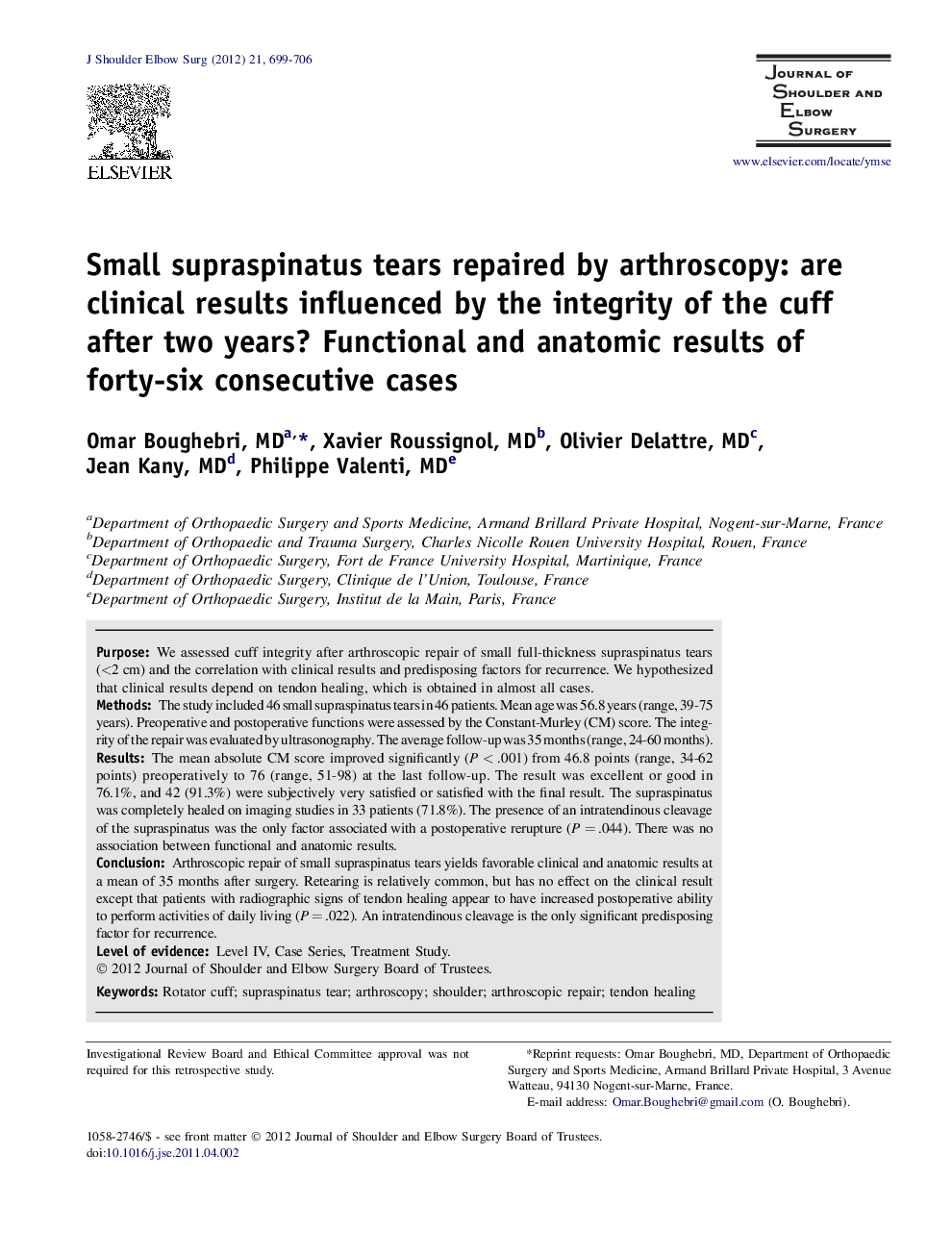| Article ID | Journal | Published Year | Pages | File Type |
|---|---|---|---|---|
| 4074578 | Journal of Shoulder and Elbow Surgery | 2012 | 8 Pages |
PurposeWe assessed cuff integrity after arthroscopic repair of small full-thickness supraspinatus tears (<2 cm) and the correlation with clinical results and predisposing factors for recurrence. We hypothesized that clinical results depend on tendon healing, which is obtained in almost all cases.MethodsThe study included 46 small supraspinatus tears in 46 patients. Mean age was 56.8 years (range, 39-75 years). Preoperative and postoperative functions were assessed by the Constant-Murley (CM) score. The integrity of the repair was evaluated by ultrasonography. The average follow-up was 35 months (range, 24-60 months).ResultsThe mean absolute CM score improved significantly (P < .001) from 46.8 points (range, 34-62 points) preoperatively to 76 (range, 51-98) at the last follow-up. The result was excellent or good in 76.1%, and 42 (91.3%) were subjectively very satisfied or satisfied with the final result. The supraspinatus was completely healed on imaging studies in 33 patients (71.8%). The presence of an intratendinous cleavage of the supraspinatus was the only factor associated with a postoperative rerupture (P = .044). There was no association between functional and anatomic results.ConclusionArthroscopic repair of small supraspinatus tears yields favorable clinical and anatomic results at a mean of 35 months after surgery. Retearing is relatively common, but has no effect on the clinical result except that patients with radiographic signs of tendon healing appear to have increased postoperative ability to perform activities of daily living (P = .022). An intratendinous cleavage is the only significant predisposing factor for recurrence.
